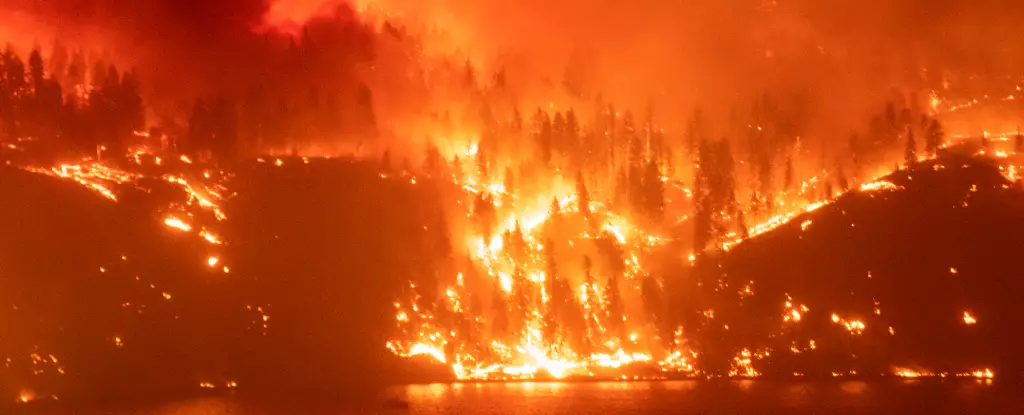The occurrence of devastating wildfires has become almost synonymous with the modern world, transcending geographical boundaries and climatic conditions. From the fiery landscapes of Los Angeles to the once serene forests of the southern Appalachians and beyond to Hawaii, the phenomenon is gripping not just specific locales but the entire planet. The infernos sweeping across regions in Canada, Australia, Greece, and Portugal prompt a disturbing realization: humanity’s relationship with fire has evolved into an unprecedented crisis that reflects both our historical practices and our future trajectory.
Fire has been a pivotal force in human civilization—a muse and menace interwoven into our existence. For millennia, our ancestors harnessed fire as a tool for survival, leading to advancements in agriculture, industry, and society at large. Yet this relationship has gradually morphed into something far more complex in the wake of modernization and industrialization. The historical narrative of fire speaks to our ability to manipulate it for comfort and convenience. However, the expansion of our fire practices dramatically reshaped ecosystems, suggesting a striking shift from stewardship to exploitation—a shift that now finds its culmination in the fiery landscape of the present day.
Fires, natural and human-induced, are essential for maintaining ecological balance. Historically, ecosystems co-evolved with fire, relying on its cycles to renew and rejuvenate landscapes. Yet, the last few centuries have seen a significant alteration of this balance due to anthropogenic factors. The abandonment of traditional fire practices, such as controlled burns, coupled with rampant urbanization and fossil fuel consumption, has led to ecosystems that are now overburdened with fuel that burns uncontestably. The intricate cohabitation of fire and life forms—a relationship meticulously cultivated for over 400 million years—has been undermined, leading to landscapes that are now more prone to destructive wildfires.
The transition from renewable energy sources to fossil fuels has transformed our interactions with fire beyond comprehension. The industrial age brought about a combustion system capable of igniting fires beyond the limits imposed by ancient ecological systems. Whereas fire once served a regulated purpose within environmental checks and balances, modern techniques—aided by technology—have enabled fires to transcend local boundaries. Inherent in this transformation is the warming of the planet, precipitating a climate crisis that intensifies the conditions for wildfires. This interplay between climate change and land-use practices is not merely coincidental but symptomatic of a broader paradigm shift toward fossil-fuel dependence.
In response to the alarming frequency and intensity of wildfires, society has adopted an industrial approach to fire management. Instead of working with natural fire cycles, modern methods often involve fire suppression tactics that include bulldozers, air tankers, and advanced pumping systems. The fundamental irony lies in the fact that while society seeks to control fire through industrial fire-fighting measures, these methods may exacerbate the problem. By suppressing fires, instead of allowing natural burns to take their ecological course, accumulated fuels amassed over decades become an unmanageable hazard that intensifies future conflagrations.
What emerges from this chaotic interaction of human activity, climate change, and wildfires is the concept of the Pyrocene—a new epoch characterized by the dominance of fire as an environmental force. Much like the historical Ice Ages, we now bear witness to a “fire age,” where the consequences of fire extend beyond mere flames. This epoch is marked by catastrophic ecological shifts, biogeographical migrations, and an irrevocable impact on waterways and ecosystems. It reveals how humanity’s manipulation of fire has tangled it into a vortex of ecological degradation and climate chaos, reshaping our planet in profound and often destructive ways.
As we embark on our journey through the Pyrocene, it is crucial to recognize fire as an integral part of the Earth’s ecology, rather than merely a force to be contained or eliminated. Understanding the deep connections between fire, ecosystems, and human practices could yield transformative shifts in our approach to land and fire management. Moving forward, we must embrace a more holistic dialogue about fire—one that acknowledges its historical role and its future potential to coexist symbiotically with human civilization. In doing so, perhaps we can develop sustainable practices that balance the challenges of our fiery epoch with the need for ecological resilience.


Leave a Reply